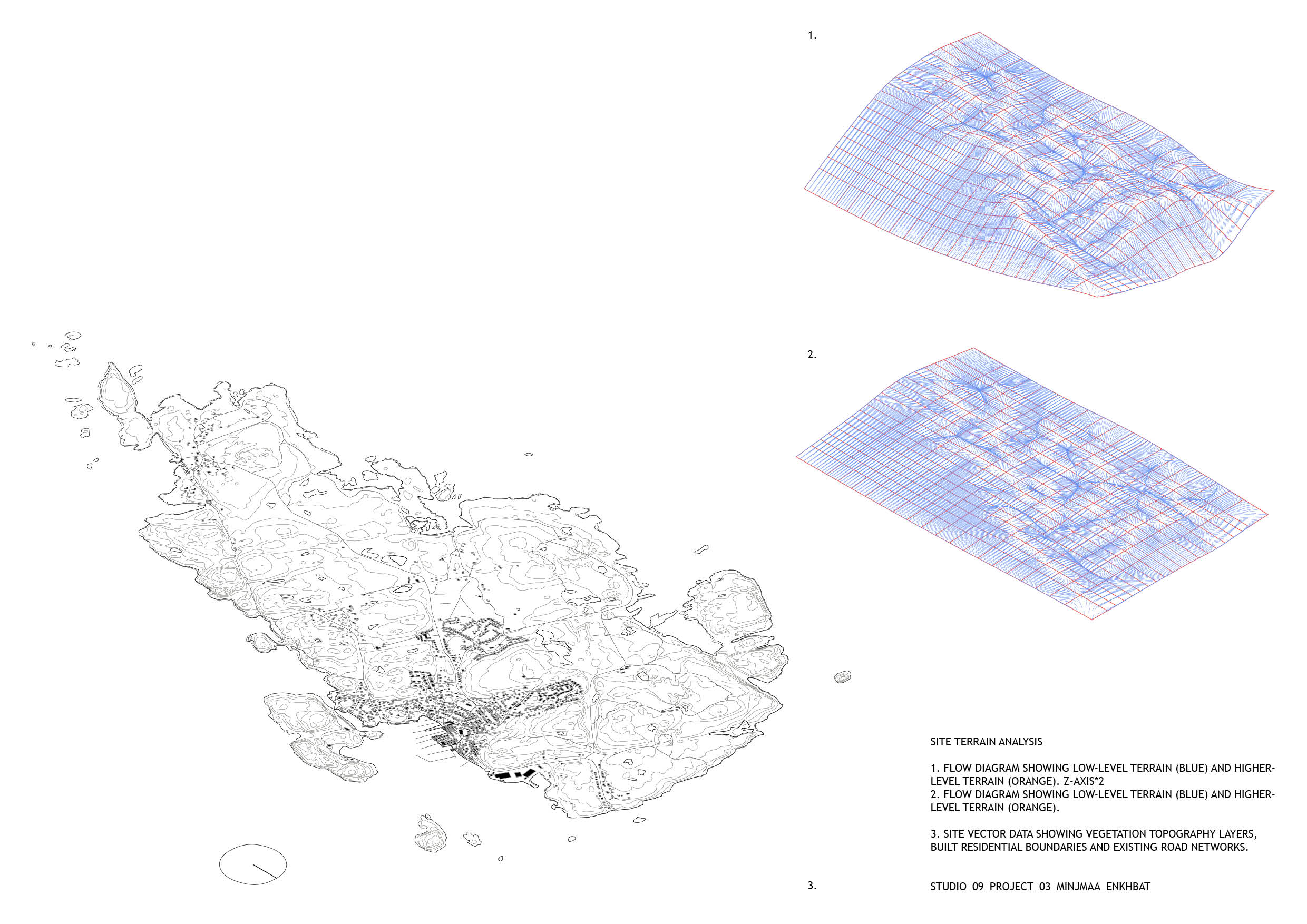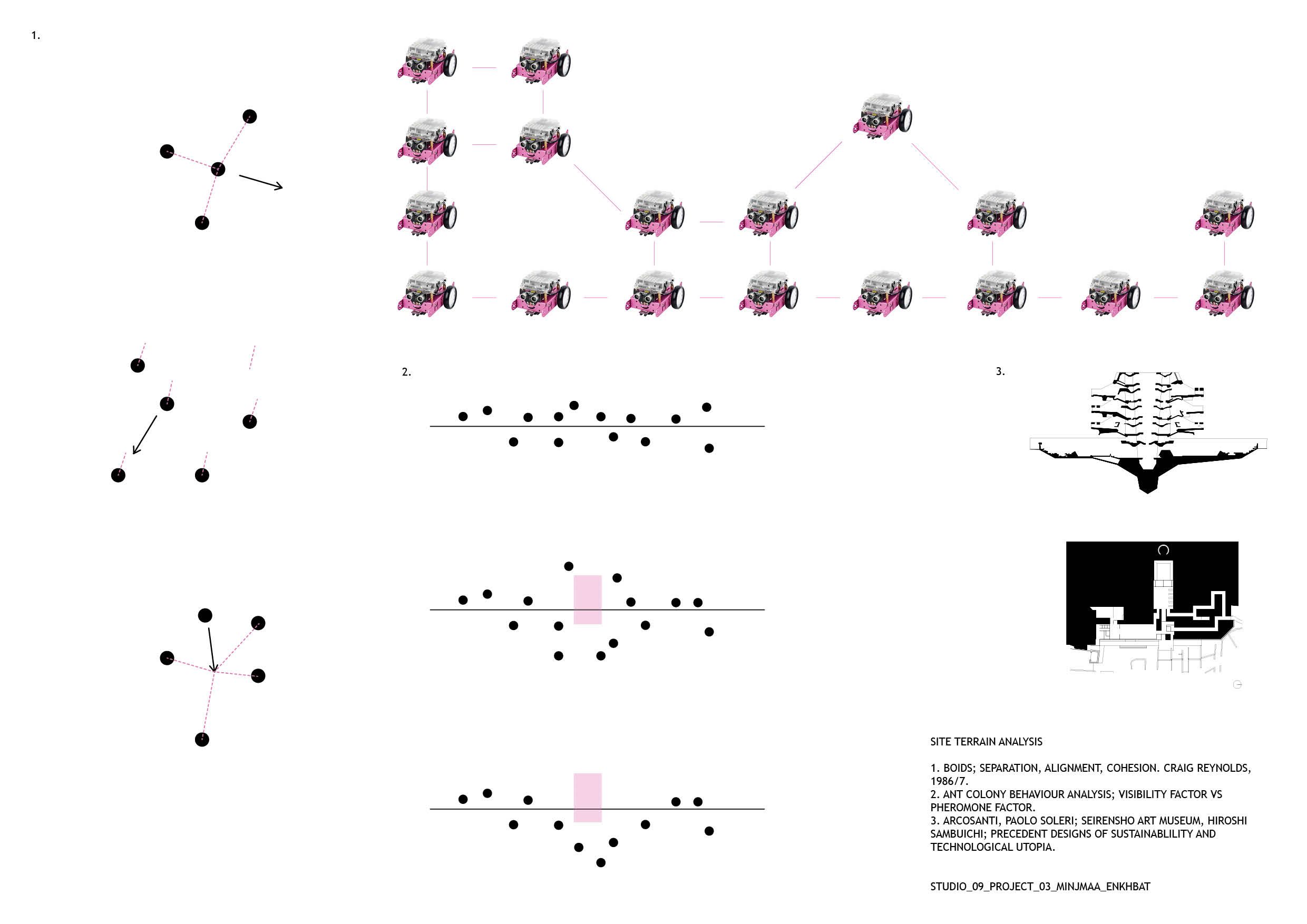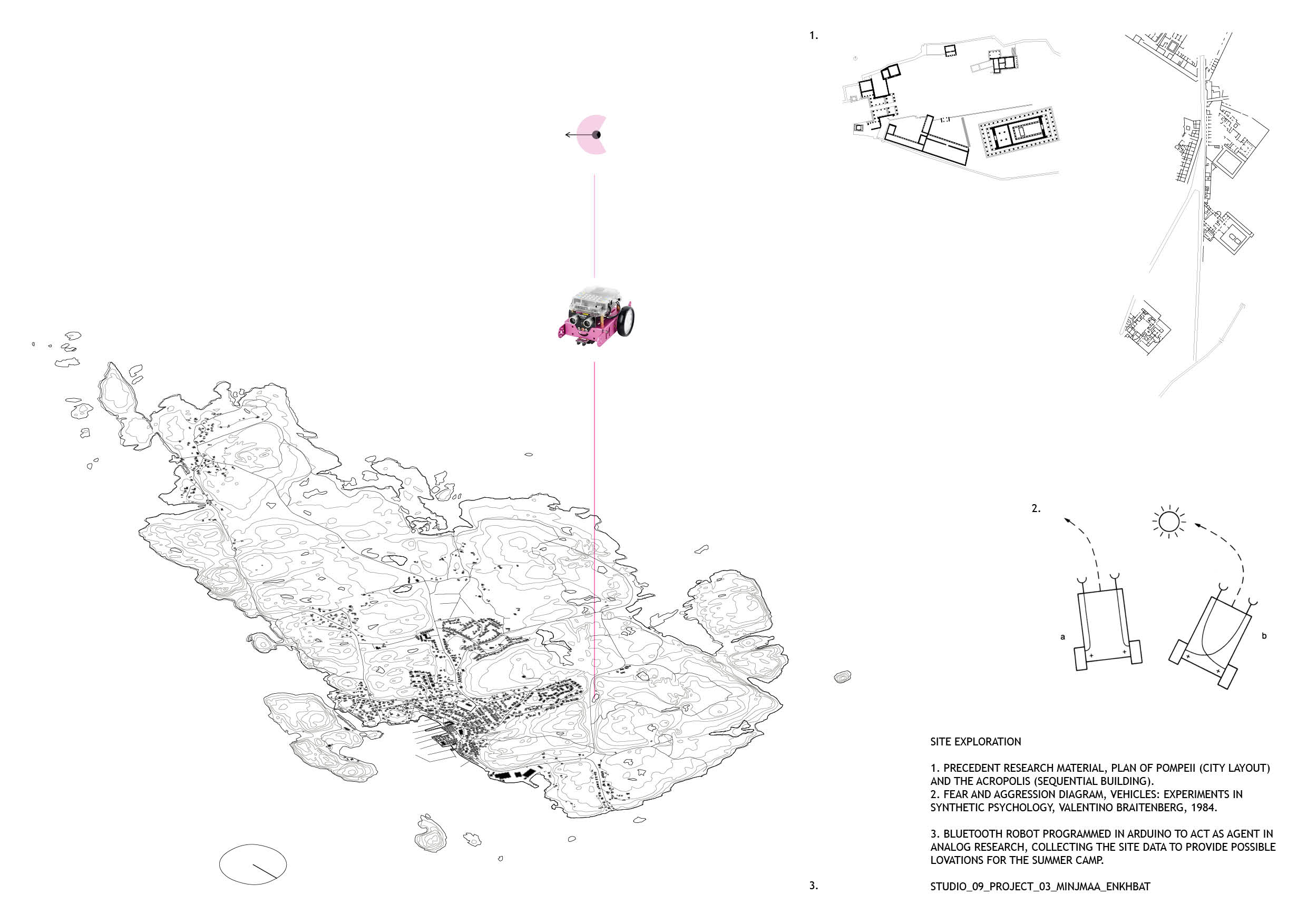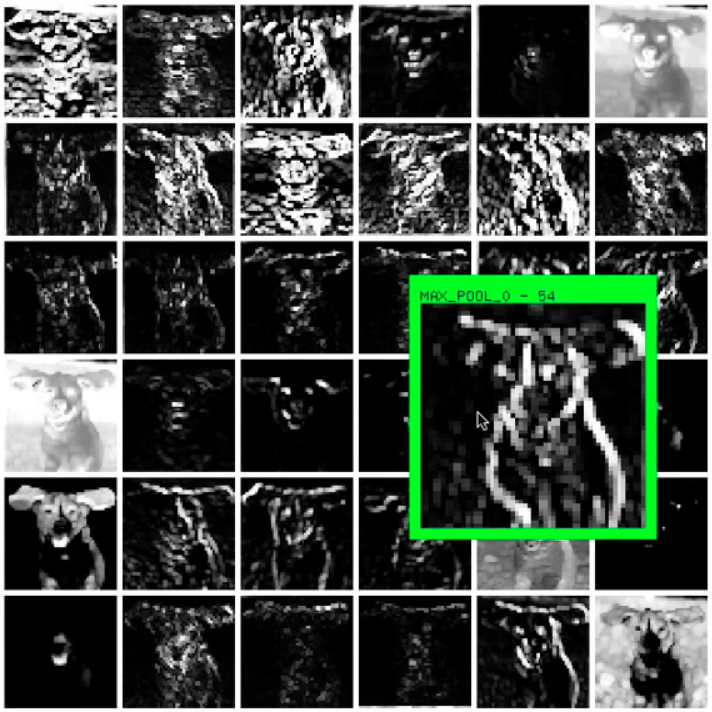Decided to put this on YouTube (and here) for posterity. More detailed description of the agents’ behaviors is available in an older post.
Category: Videos
ii. big data and nomadic robotics.
Studio 9_Project 3_Task 2: Occupations and Interventions.
To occupy the site I began by collecting and analysing site data for Malmön. The program QGIS for editing and analysing geospatial information was used to extract the vector information; topography, population and marine geology. A colour png map provided the basis for extracting the 3D terrain data using a python script and into Rhino, with initial topography analysis through flow diagrams in grasshopper. A photographic study was also carried out and compiled into a booklet.

The intervention aspect was based heavily on ABM research – agent based models. An agent is aware of its surroundings and its abilities. When acting in a collective manner they exhibit swarm intelligence, the collective behaviour of decentralised self-organised systems. This means each member autonomously offers its abilities in order to study an overall system. The members, or agents, self-coordinates without a leader and cooperate in solidarity resulting in a self-healing system. This allows members to be added or removed dynamically as the agents will recalibrate in a constant feedback loop.
‘Boids’ by Craig Reynolds was the grounds for my research into swarms and flocking behaviours for computer simulations. His theory is a basic flocking model consisting of three steering behaviours; separation, alignment and cohesion. Ant colonies that organise using pheromone and visibility factors were also part of the initial studies.

I would like to base project 3 on the collection of site data using agents and subsequently allowing the agents to alter the collected data in order to intervene and implement the summer camp design on Malmön. To engage with this theory in the material dimension, I decided give form to the agent as a mini Arduino robot name Mö. This allows for real-time feedback with the tests I run for the agent simulation on site. Giving robotics agent behaviours has its own research and theory basis. Although Craig Reynolds theory of Boids is a great foundation, I also studied vehicle behaviour and coding in ‘Vehicles: Experiments in Synthetic Psychology’ by Valentino Braitenberg. Processing and Arduino will be the main programming softwares, with C and Java as scripting languages. The Nature of Code on youtube and Github, as well as Studio 09’s own processing tutorials have been great learning platforms for this.

Metal folding
Machine Learning for Artists
In my current project, I’m working on generative processes with some connections to machine learning techniques. I just found a great resource, Machine Learning for Artists, with lots of video lectures and code related to principle component analysis, neural networks, deep learning and much more.

Check out the “classes” tab for the video lectures.
“Stoorn” – Elk Architecture
Hey guys,
Just wanted to share the famous “Stoorn”: https://www.youtube.com/watch?v=qH5F6tfvhUI (not yet built, but it has building permit)
Sorry if you don’t understand Swedish, but I can tell you, that this dialect… I barely understand! But the idea (and animation) is just priceless. “You should really feel that you are inside the body of an elk!” / Torbjörn Holmlund
https://www.thelocal.se/20071126/9219, https://en.wikipedia.org/wiki/Stoorn
Alan H. Schoen ‘Shapes of Soap Films’ 1972
An investigation into how triply-periodic minimal surfaces are defined, derived, and classified. Includes description of examples known in 1972. Plateau’s problem. Fundamental concepts of the differential geometry of minimal surfaces, including the Schwarz reflection principle; Euler characteristic; mean curvature; Gaussian curvature; Gauss map of a surface by parallel normals onto the Riemann sphere; associate and adjoint surfaces; skeletal graphs; complementary minimal surfaces; the classical Schwarz surfaces and the gyroid.
Part 1: https://www.youtube.com/watch?v=JulrXPr19hs
Part 2: https://www.youtube.com/watch?v=-9bB00XShWQ
Part 3: https://www.youtube.com/watch?v=bokgQhFoMjY
Part 4: https://www.youtube.com/watch?v=3APTe-VubOI
Wasp plugin – Discrete Design with Grasshopper
Wasp is a set of Grasshopper components, developed in Python, directed at representing and designing with discrete elements. The description of each individual part includes basic information necessary for the aggregation process (part geometry, connections location and orientation). The set of connections define the topological graph of the part, which is then used to define the possibilities of aggregation with other parts.
The core of the framework relies on a set of aggregation procedures, allowing generation of specific structures from the combination of different modules. Each of these procedures is composed of strategies for the selection of basic aggregation rules, described as an instruction to orient one module over a selected connection of another module. Currently available procedures include stochastic aggregation and field-driven aggregation.
Download: http://www.food4rhino.com/app/wasp
Significant parts of Wasp have been developed by Andrea Rossi as part of research on digital materials and discrete design at DDU Digital Design Unit – Prof. Oliver Tessmann – Technische Universität Darmstadt (http://www.dg.architektur.tu-darmstadt.de/dg/startseite_3/index.de.jsp)
Intro I.0 The Nature of the Code
Nature of the Code, authored by Daniel Shiffman, is an excellent resource to basic understanding of computational design with Processing. Shiffman has a Vimeo Page, that has wonderful videos to go through these concepts at your own pace.
This is the first video of his series:
Arthur C Clarke: Fractals: The Colors of Infinity
Arthur C. Clarke presents this unusual documentary on the mathematical discovery of the Mandelbrot Set (M-Set) in the visually spectacular world of fractal geometry. This show relates the science of the M-Set to nature in a way that seems to identify the hand of God in the design of the universe itself. Dr. Mandelbrot in 1980 discovered the infinitely complex geometrical shape called the Mandelbrot Set using a very simple equation with computers and graphics.
Neri Oxman
Design at the intersection of technology and biology, Neri Oxman
